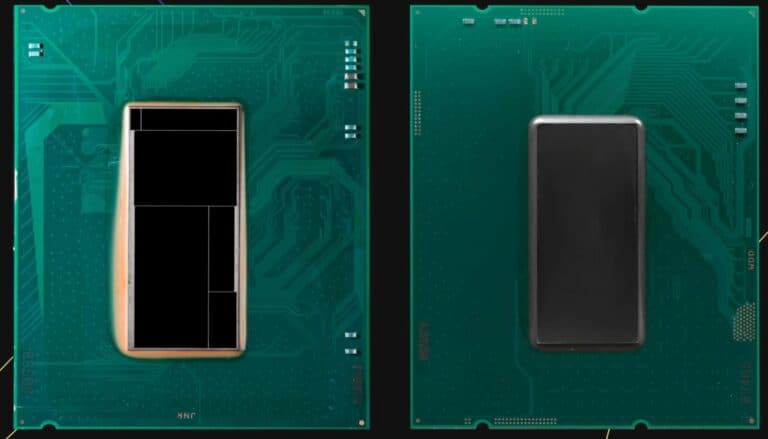ASUS reveals die shot of Intel’s Core Ultra 9 285K processor
Intel's first Tiled CPU for desktop PCs

WePC is reader-supported. When you buy through links on our site, we may earn an affiliate commission. Prices subject to change. Learn more
ASUS recently shared delidded pictures of the upcoming Core Ultra 9 285K, along with close-up die shots of the CPU, revealing the first-ever tiled desktop CPU design.
Intel’s next-gen processor, Core Ultra 9 285K, is nearly here, and to make things even more exciting, Tony Yu, General Manager of Asus China, just uploaded a full unboxing and delidding video of the upcoming CPU.
In the video, we see Tony Yu, also known as Uncle Tony, start by unboxing the entire Core Ultra 200S lineup, then compare the packaging sizes with the last-gen processor and proceed to discuss the CPU’s interior, where we see the multiple tiles on the processor.
Intel Core Ultra 9 285K is the first-ever tiled-fashion desktop CPU
Uncle Tony dives deep into the components hidden inside each chiplet while explaining their functions. Each Arrow Lake S processor consists of five building blocks that combine to form the CPU in a tiled-like fashion, which includes:
Intel Arrow Lake-S Tiles
- Compute Tile (TSMC N3B)
- SOC Tile (TSMC N6)
- I/O Tile (TSMC N6)
- Graphics Tile (TSMC N5P)
- Base Tile (Intel 1227.1)
Out of the five, the most important tile is the Compute or CPU tile which is manufactured using TSMC’s N3B node. It features both 8 Lion Cove P-Cores and a total of 16 Skymont E-Cores. Interestingly, Uncle Tony’s close-up die shot reveals that the rendering shared by Intel during the announcement was somewhat inaccurate.

Unlike the previous-generation Raptor Lake and Alder Lake CPUs, which had P-Cores and E-Cores in separate areas of the compute tile, the Arrow Lake CPUs combine both core types. This is likely an effort to reduce latency and enhance thermal management as well. Another to add is that, ASUS is comparing the new chiplet CPU design to the previous generation’s monolithic Raptor Lake die.
Apart from the CPU tile, here’s a quick overview of the main features of the rest of them:
Intel Arrow Lake SoC Tile
- Based on TSMC N6
- DDR5 Memory Controller (5600 MT/s Native Speeds)
- UDIMM/CUDIMM/CAMMII Support
- Up To 13 TOPS NPU3
- Media Engine (H.264/H.265/AV1)
- PCIe 5.0 x16 For dGPU
Intel Arrow Lake I/O Tile
- Based on TSMC N6
- 1x PCIe 5.0 x4 (SSD)
- 1x PCIe 4.0 x4 (SSD)
Intel Arrow Lake GPU Tile
- Built on TSMC’s N5 node.
- Based on Xe-LPG architecture (same as Meteor Lake).
- Less advanced than Lunar Lake’s Xe2-LPG and Arrow Lake-H’s Xe-LPG+.
- Contains up to 4 Xe-Cores.

Intel Core Ultra 200S launch date is just around the corner
Intel is all set to launch the Core Ultra 200 series to consumers in just 2 days. We’ve previously seen a delidded Core Ultra 200S processor surface on X, but this recent showcase from ASUS provides a much more in-depth look and offers stunning visuals of its dies. If you’re not familiar with the Core Ultra 200S lineup, we recommend checking out our recap of its flagship models, the 285K and 265K, to catch up on everything before the countdown hits zero.











